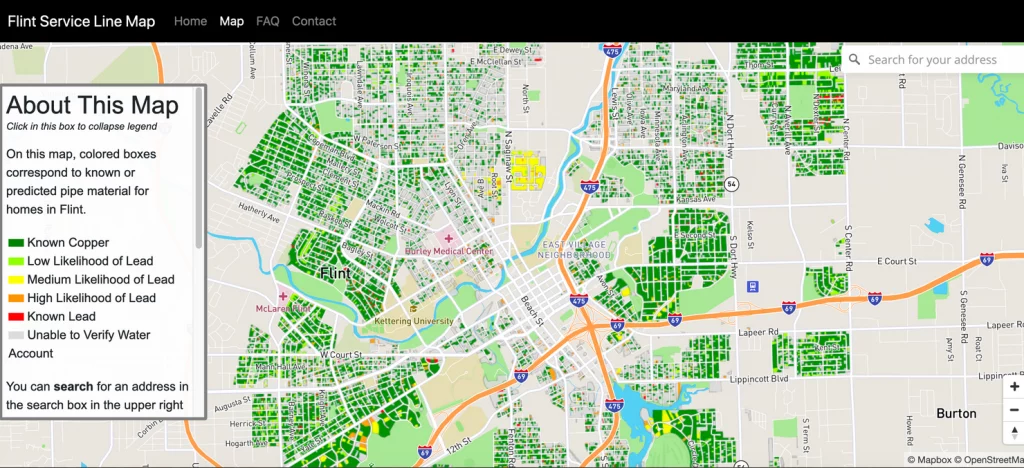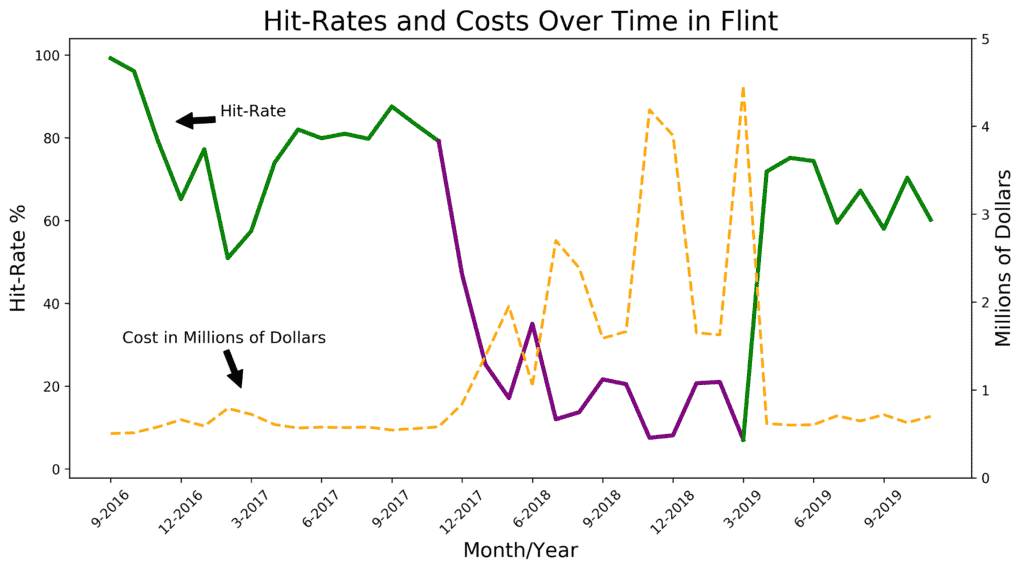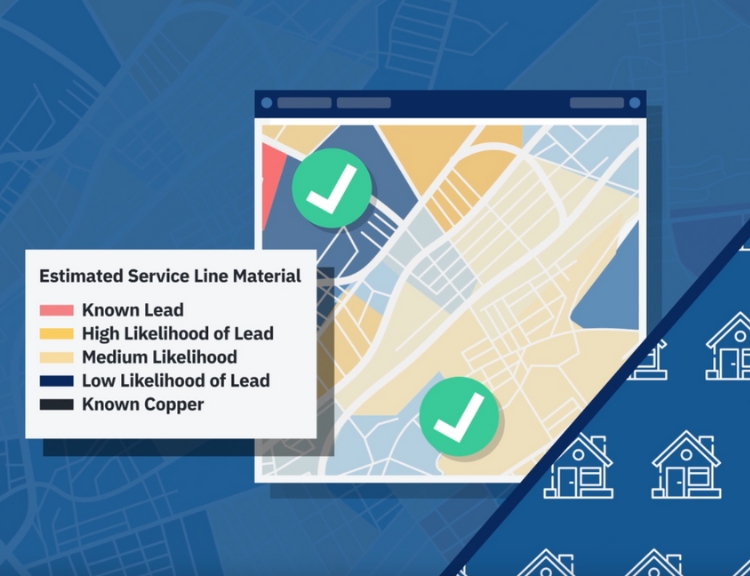Beginning in 2016, our team began collaborating with Flint city officials. We demonstrated that we could create a model to accurately generate estimates of homes needing service line replacement.
We provided home-by-home predictions indicating which homes were most likely to have lead service lines. This would eventually guide the largest and most prominent water service line infrastructure remediation project ever attempted.

Data Science for Lead Service Line Predictions
Flint used the predictive model in 2016-2017, achieving a hit rate ~80%. In 2018, the city used an outside consulting firm, which found lead service lines on 15% of excavation attempts. A court order settlement in March 2019 required the city to return to the predictive model.

Benefits of the Service Line Predictions to Flint Leadership
Accurate Count
Historical records suggested that 10-20% of the city’s pipes were lead. In 2016, BlueConduit-recommended inspections at a representative set indicated ~50% had lead in the inventory. In 2019, the true percentage of Flint homes that contained lead/galvanized (after 20,000 excavations) was verified ~50%.
Prioritized Allocation of Funds
The predictions allowed officials to send replacement crews sooner to homes with the highest risk of having lead pipes, reducing the total number of days that residents lived with a lead-tainted water supply, and minimizing the public health consequences.
Cost Savings
At a cost of a few thousand dollars per unneeded dig, our model saved the city an estimated thousands of such unneeded visits, resulting in tens of millions of dollars avoided spending.
Data Collection Procedures
The team created a web-based data collection application to allow for easy and accurate data entry, which included the appropriate security, data validation protocols, and internal checks and balances.





